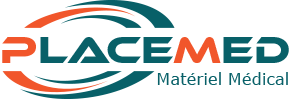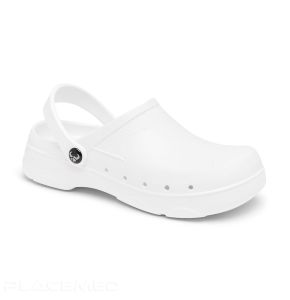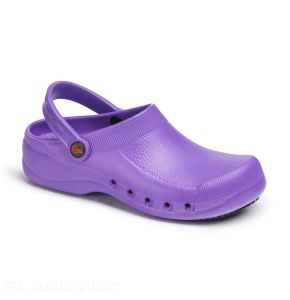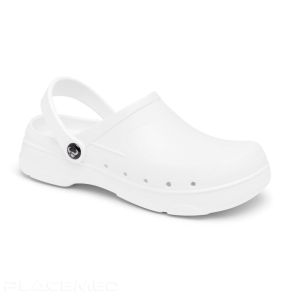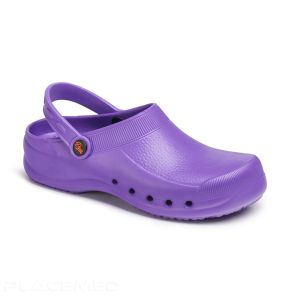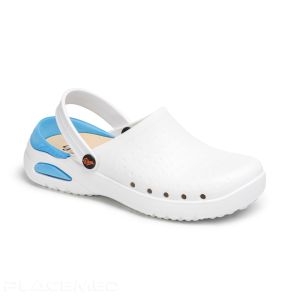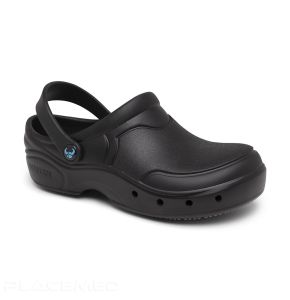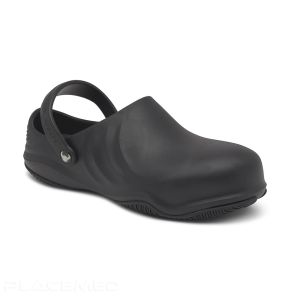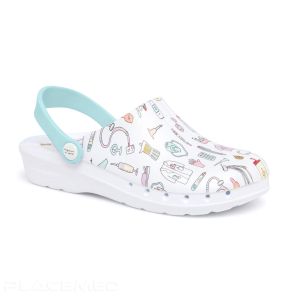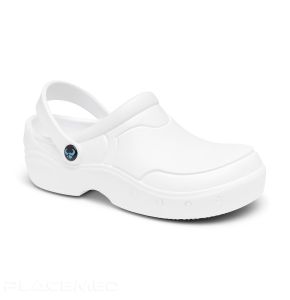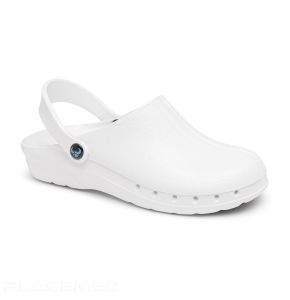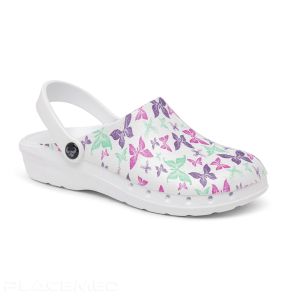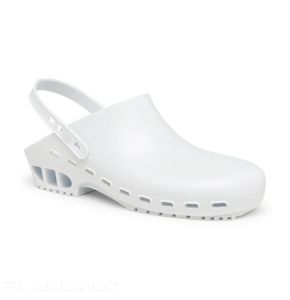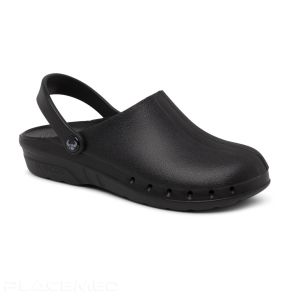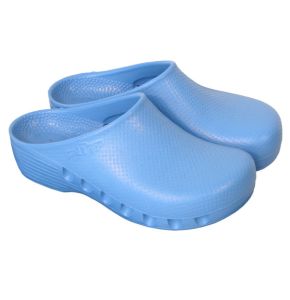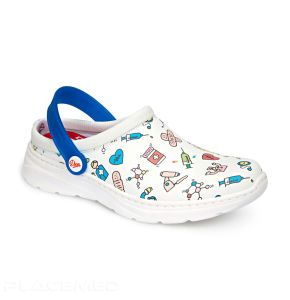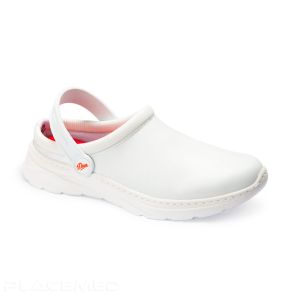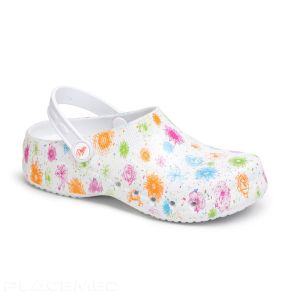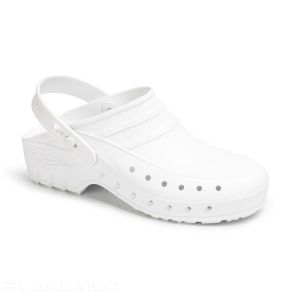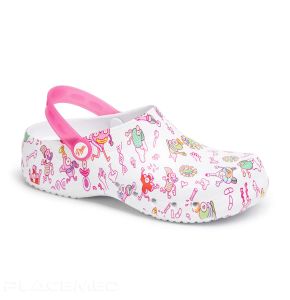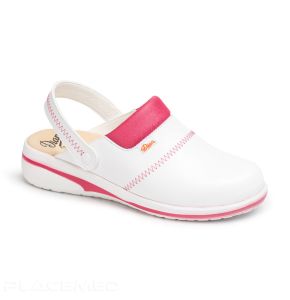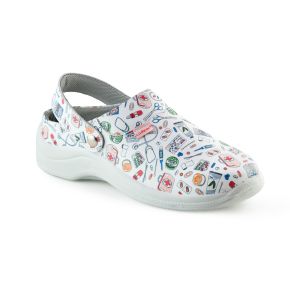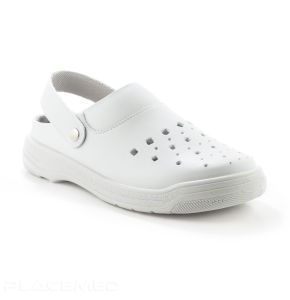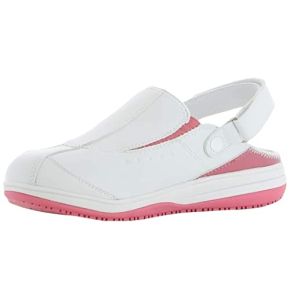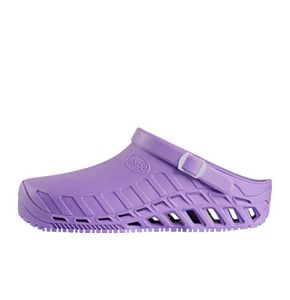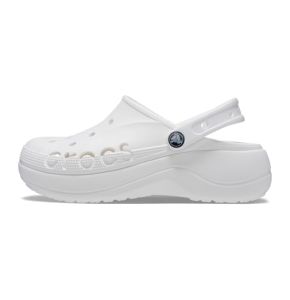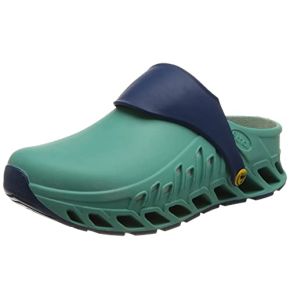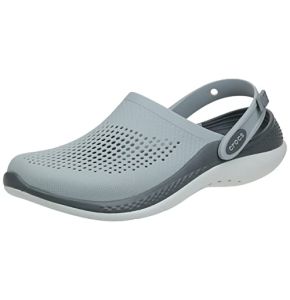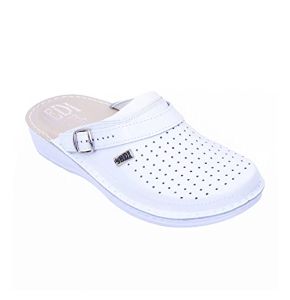Medical clog
8435607209358 06/06/2024 712
8435420420015 19/04/2024 795
8435607209365 06/06/2024 1040
8435088168182 19/04/2024 204
8435420445971 20/04/2024 1042
8436532892998 06/06/2024 718
8435607226324 05/06/2024 819
8435607220599 06/06/2024 771
8435607220834 05/06/2024 739
8435607226195 05/06/2024 729
8435607210453 06/06/2024 969
8435420465603 11/06/2024 613
8435420465580 11/06/2024 632
8435420437211 11/06/2024 658
8435088141260 20/04/2024 532
8435420462282 11/06/2024 639
8435100207769 12/04/2024 442
31/10/2024 113
31/10/2024 101
31/10/2024 125
31/10/2024 119
31/10/2024 114
31/10/2024 111
31/10/2024 106
31/10/2024 104
31/10/2024 110
31/10/2024 108
31/10/2024 116
31/10/2024 109
31/10/2024 102
31/10/2024 105
31/10/2024 92
Elegant & Stylish Medical Clogs for Professionals
Working in the medical field requires high-quality professional medical clogs, designed to meet the specific needs of this environment. These work shoes allow healthcare providers to focus fully on their tasks without being distracted by foot pain. They are ideal for employees in clinics, nursing homes, medical centers, and pharmacies.
Often referred to as medical mules or crocs, they meet various health requirements. They protect against moisture, reduce slip risks, resist chemical substances, and are built to last. These features are essential to ensure safety and comfort throughout the day.
At its dedicated “medical clog” stand, Placemed offers a wide range of comfortable and professional medical clogs. They are carefully selected from top brands, such as Suecos, Dian, and Codeor, to provide elegant and effective solutions.
Why are medical clogs important for healthcare staff?
It is essential for healthcare staff to have appropriate equipment, particularly professional shoes. When well-designed, these shoes provide optimal ergonomic support, reducing fatigue caused by constant movement and long hours standing. Their specific design also helps prevent slips and falls, thanks to effective anti-slip soles.
Medical crocs, especially hospital clogs, have several advantages over traditional shoes, including:
- Increased comfort: Lightweight and pleasant to wear all day.
- Optimal support: Even weight distribution on the spine.
- Anti-slip protection: Soles specially designed to prevent slips on various surfaces.
- Ergonomics: Designed to match the anatomy of the foot.
- Standards compliance: Made to meet international quality standards.
- Durability: Professional shoes resistant to wear and defects.
What are the different types of medical clogs for foot protection?
White medical clogs are an essential part of healthcare uniforms, just like a medical coat. Different models are available to meet each healthcare professional's specific needs. On the official Placemed.fr website, you will find a wide range of foot protection options suitable for both indoor and outdoor use.
With perforations
Perforated medical clogs are both stylish and practical. The perforations allow better air circulation, reducing sweat and discomfort. These models are equipped with adjustable straps and anatomical soles for a custom fit and optimal arch support.
Without perforations
Usually made of EVA, non-perforated models are molded in a single piece, making them particularly sturdy and easy to clean. They are ideal for healthcare staff working in environments where hygiene is crucial. Their anti-slip soles provide excellent grip on wet or slippery floors.
Autoclavable clogs
To ensure perfect hygiene, autoclavable clogs are designed to be sterilized at high temperatures without deforming or losing their properties. These medical crocs are especially suitable for environments requiring strict asepsis, such as operating rooms.
Anti-static
In some hospitals, where electronic equipment is sensitive to static charges, wearing anti-static clogs is recommended. These models dissipate accumulated electrical charges, enhancing the safety of both staff and patients.
With safety toe cap
Some medical crocs are equipped with a protective toe cap, made of steel or composite material. They are designed for professionals exposed to risks of impact or falling heavy objects, providing extra protection while maintaining comfort.
Orthopedic clogs
Orthopedic clogs are designed for those with specific arch support needs. They feature ergonomic soles and adapted reinforcements, helping reduce fatigue and pain associated with long hours of standing.
What materials are used in making medical clogs?
Medical clogs are made from carefully chosen materials for durability, comfort, and resistance to wear. Here are the main materials used:
Faux leather
Faux leather is a synthetic material that looks like genuine leather. It is appreciated for its aesthetic and affordable cost. However, it may wear faster than genuine leather, especially with moisture or intensive use.
Genuine leather
Genuine leather is known for its durability and ability to conform to the foot's shape. It offers excellent breathability, essential for comfort during long workdays. Leather medical crocs are long-lasting and maintain their aesthetic appeal over time.
EVA
EVA (Ethylene-vinyl acetate) is a lightweight, flexible, and durable plastic material. It is waterproof and provides good thermal insulation. EVA clogs are easy to maintain, often machine washable, and resistant to chemicals, making them ideal for medical environments.
Natural and synthetic rubber
Used for soles and some parts of work shoes, rubber offers excellent grip and good resistance to wear. It is generally machine washable and provides cushioning, enhancing comfort.
Polyurethane (PU)
Polyurethane is a lightweight and durable material, often used for midsoles. It provides good cushioning and flexibility, promoting walking comfort.
Microfiber
Microfiber is a lightweight and breathable synthetic material. It is stain-resistant and easy to clean, making it a practical choice for the medical field.
Thus, choosing a white medical clog made with these quality materials will ensure comfort throughout the day.
How to choose your “professional medical clog”?
Today, websites specialized in medical attire offer a wide variety of medical clogs. You can find classic, perforated, stamped clogs, moccasin types, and more.
When choosing a professional medical clog, anti-slip properties are very important for caregivers. Comfort and hygiene are also essential. However, the suitable model often depends on the specific requirements of each specialty.
Material
It is best to opt for high-quality natural materials. This allows the foot skin to breathe, ensuring good ventilation and preventing sweating.
Some synthetic materials may cause irritation or fungal infections in some people. Therefore, it is recommended to choose materials such as natural leather, nubuck, suede, or thick textiles. Additionally, selecting materials suitable for sterilization processes ensures optimal hygiene.
Shape
The shape of the clogs should meet the demands of the job. Round, wide-toe models are ideal for personnel working in a clinic or hospital. These models are comfortable, do not press on the toes, and reduce the risk of calluses.
Sole
This type of equipment should be chosen carefully. Opt for an orthopedic sole or arch support to protect flat feet and distribute body weight evenly, reducing foot fatigue.
Also, choose a small sole (1 to 3 cm) for all-day comfort. This slightly raises the foot, reducing muscle and tendon strain.
A flexible sole, like PU (polyurethane), is essential to lessen load and improve shock absorption. Inserts for flat feet can also be beneficial, providing extra support and comfort.
Color
Medical crocs are often made in light colors like white, beige, or light gray. With these colors, dirt is easily visible, making it easier to maintain hygiene.
Standards and certifications
It is important to choose models that comply with ISO 20347 standards. These standards specify the fundamental and additional requirements for work shoes used in a professional setting. They guarantee, for example, that a professional medical clog meets the necessary safety, comfort, and durability criteria for a hospital.
Additional tips
To optimize your choice, it is recommended to contact several vendors specialized in medical uniforms. This will allow you to get more information and compare prices. By considering all these criteria, you will find the medical clogs suited to your needs.
How to care for your "medical clog"?
Regular care of your medical shoes is essential to ensure their longevity and maintain their performance. Here are some practical tips:
- Daily cleaning: Wipe them with a damp cloth after each workday to remove dirt and residue.
- Use of appropriate products: Use cleaning products made for the materials of your crocs (leather, suede, textile) to avoid damaging the surface.
- Proper drying: Let them air dry in a well-ventilated place, away from direct heat sources. This prevents deformation or shrinking of the materials.
- Regular inspection: Check the condition of the anti-slip soles regularly and replace them if they show signs of wear.
- Use of orthopedic inserts: Consider using orthopedic inserts for extra comfort and better arch support.
- Proper storage: Store them in a dry, ventilated place to prevent moisture build-up and bacteria growth.
- Sterilization: Choose models made from materials compatible with sterilization processes, ensuring optimal hygiene.
Visit our medical shoe stand to discover our new selection of medical shoes and find the perfect pair for your professional activity.
 Francais
Francais 